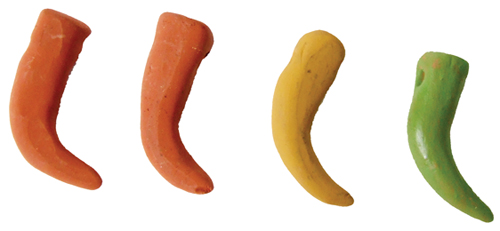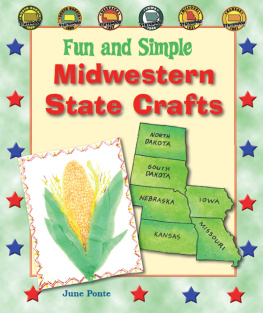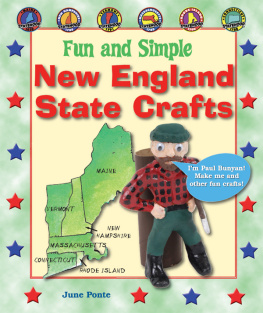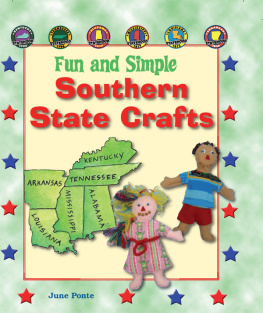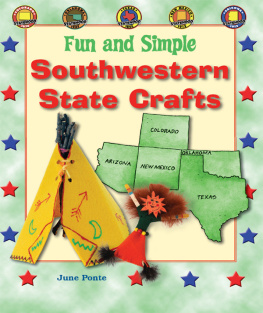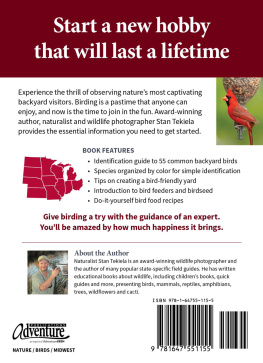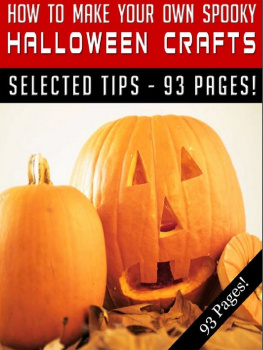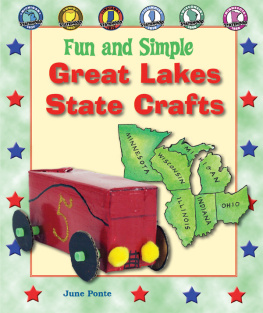DO YOU KNOW YOUR STATES?
Learn interesting and exciting facts about Midwestern states while creating fun crafts!
Find out about each state's capital, motto, flower, animal, and more! Make a Mandan Indian Bear Claw Necklace, Frog Clicker, Galloping Wild Horse, and more!
"Learn about the geography and history of states in the Midwest at the same time you make an interesting, unique craft. Want to learn about a giant sloth or a huge quilt? Read Fun and Simple Midwestern State Crafts!
Duncan R. Jamieson, Ph.D., Professor of History, Ashland University
About the Author
June Ponte, illustrator and fine artist, grew up surrounded by her mother's artwork. She was inspired by tales of her eccentric grandfather, who used a fountain pen to draw majestic schooners on her grandmother's linen tablecloths. This is her firstseries with Enslow Publishers, Inc.

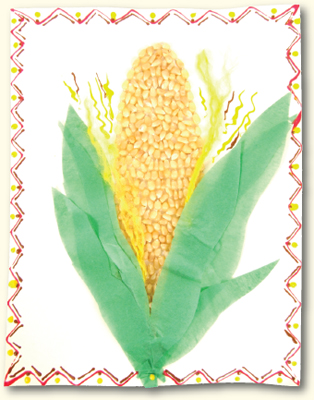
North Dakota, South Dakota, Nebraska, Iowa, Missouri, and Kansas are the six states in the midwestern region. This area is referred to as the Midwest, because the states are located in the midwestern region of the United States. The geography of the midwestern states varies from grasslands and prairies, to rocky lands and forests. Missouris eastern border is formed by the Mississippi River. The state is mostly plains and prairie land. Nebraska is covered by plains, and most of the land is devoted to farming. The largest area of sand dunes in North America is in central Nebraska. Sand dunes are made of fine sand shaped into hills by wind. North Dakota shares a border with Canada. Wheat crops grow well in this states cool climate. South Dakota is home to many American Indians, including the Dakota, Lakota, and Nakota Sioux Nation tribes. The state has a prairie region and an area of badlands with unusual rock formations and deep canyons. Iowa has large areas of prairie land. The state is bordered by the Missouri River to the west and the Mississippi River to the east. Kansas has large areas of plains. Many of these plains are covered with fields of wheat and sunflowers. About 90 percent of Kansas is still farmland.
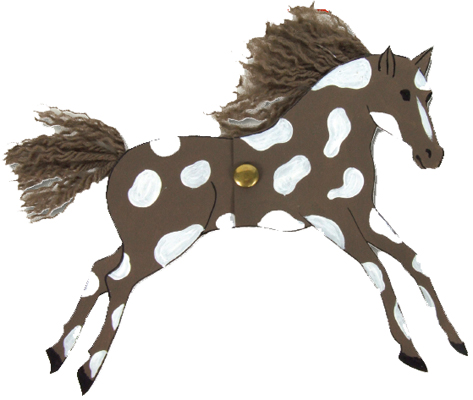
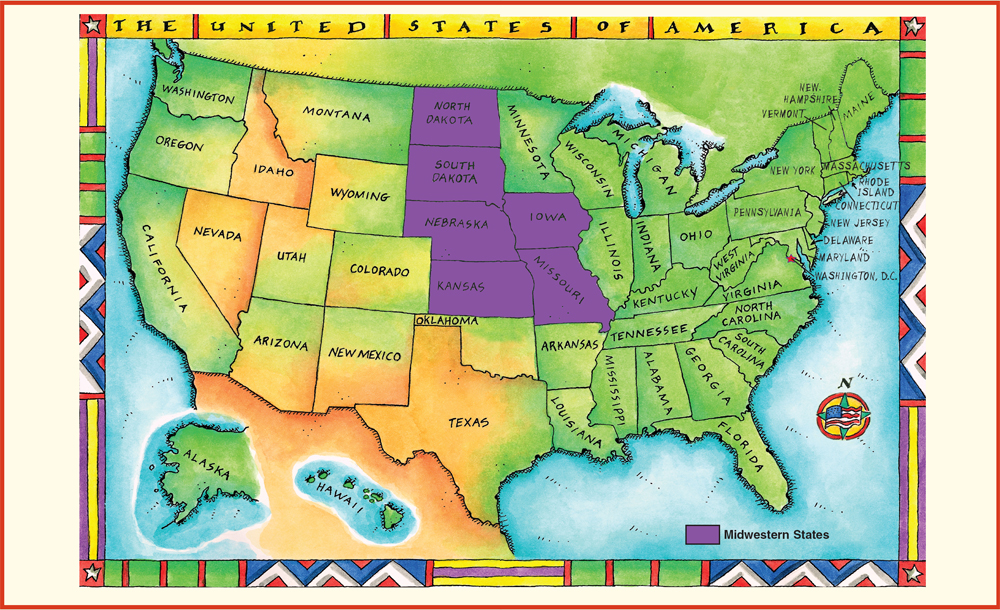
Image Credit: 1999 Artville, LLC.
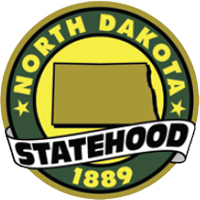
| Origin of name | Dakota means friends in the Dakota Indian language. |
| Flag | The North Dakota state flag is dark blue. The first thirteen states are represented by thirteen stars. A bald eagle is in the center of the flag. The eagle holds arrows and an olive branch. The original thirteen states are represented by the red, white, and blue crest on the eagles chest. In the eagles talons is a scroll that reads E Pluribus Unum (one nation made up of many states). North Dakota is written on a red scroll beneath the eagle.
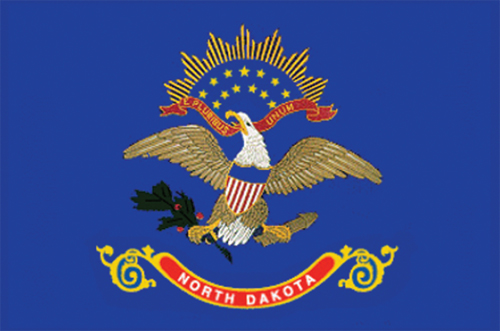
Image Credit: 2001 Robesus, Inc. |
| Capital | Bismarck |
| Nickname | Peace Garden State
Flickertail State
Roughrider State |
| Motto | Liberty and Union, Now and Forever, One and Inseparable |
| Size (in area) | 19th largest |
| Bird | Western meadowlark
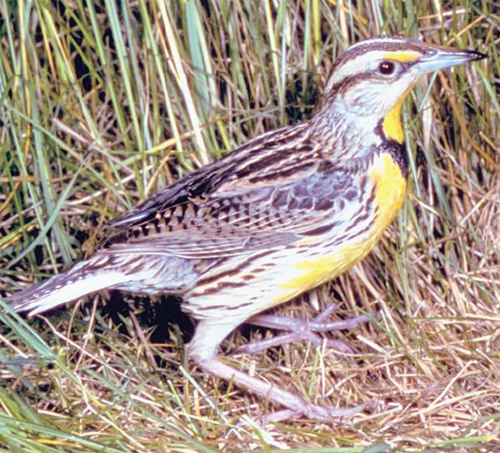
Image Credit: 2007 Jupiterimages, all clipart |
| Fish | northern pike |
| Flower | wild prairie rose
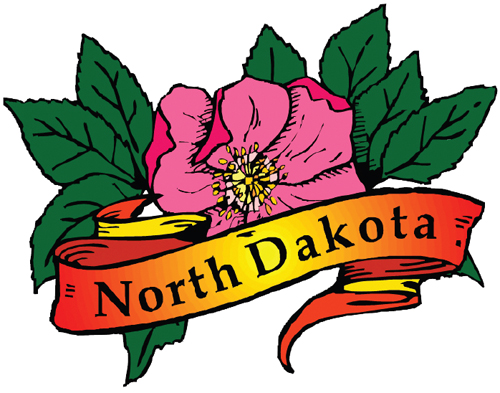
Image Credit: 2007 Jupiterimages, all clipart |
| Fossil | Teredo petrified wood |
| Fruit | chokecherry |
| Tree | American elm |
| Industry | agriculture, mineral production, tourism |
- poster board
- markers
- scissors
- two large pieces of green felt, adhesive backed
- glitter pen
- puff paint
- cotton balls
In 1988, the worlds largest historical quilt was created to honor the one hundedth anniversary of North Dakotas statehood. The quilt is shaped like the state of North Dakota. Leona Tennyson of Antler, North Dakota, created the quilt. People from each of the fifty-three counties in North Dakota helped to stitch the quilt together. It covers more than 11,000 square feet, and weighs 800 pounds!
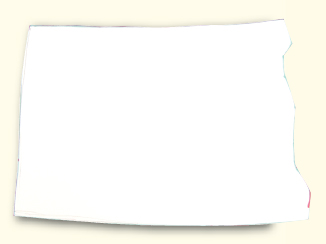
1. Draw the state of North Dakota on poster board with a marker. (See for pattern.) Cut it out.
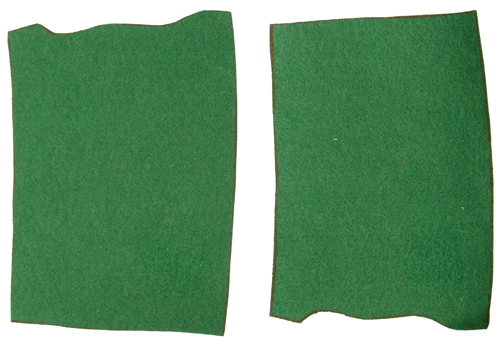
2. Trace the map onto two pieces of green felt. Cut out the two pieces.
3. Write the name North Dakota across one of the pieces using a marker. Trace over the letters with a glitter pen. Let dry.
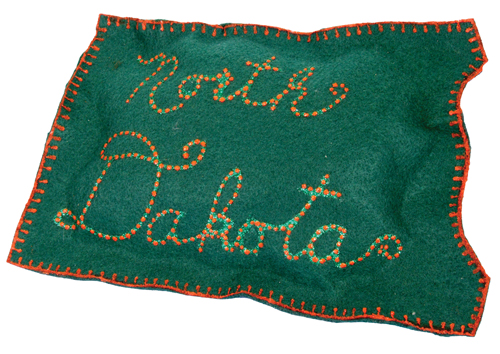
4. Pull backing off of the felt and match both pieces together on one side. Place cotton balls in the center. Finish closing the pillow. If you wish, deocrate the edge of the pillow with puff paint. Let dry.
- self-hardening clay
- scissors
- toothpick
- poster paint
- paintbrush
- glue wash (1/2 cup of white glue mixed with one cup of water)
- yarn
- 30 medium wooden beads
During the winter of 1804, the Mandan Indians helped the explorers Meriwether Lewis and William Clark. The Mandan traded food for goods and taught the explorers about grizzly bears. The Mandan people used grizzly bear claws, fur, and beads to make necklaces. These necklaces were prized as important symbols of courage.
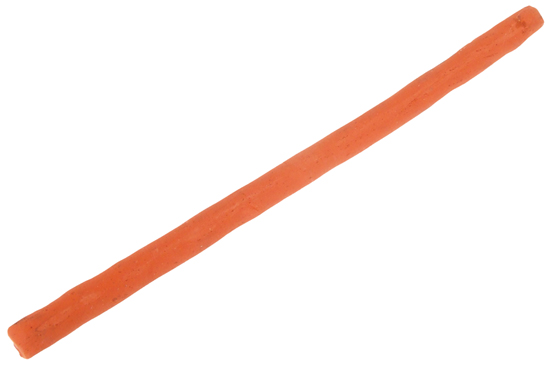
1. Roll a piece of self-hardening clay into a 12-inch-long x 1/2-inch-wide piece.
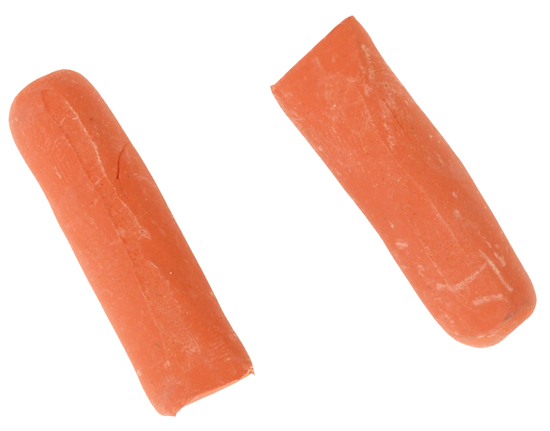
2. Cut the clay into eight 1 1/2-inch-long pieces. Form each piece into a bear claw by rolling the end of each piece into a point. Then bend the clay a little so that it is curved. Use a toothpick to make a hole in the wide top of each piece of clay. Let dry.
